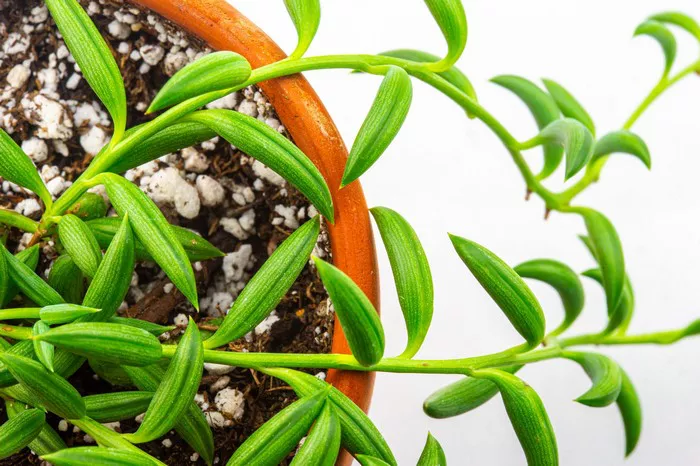As the sun dips below the horizon and the world plunges into darkness, one might assume that plants, like their human counterparts, simply rest. However, beneath the surface of this assumption lies a world of intriguing and vital processes. The nocturnal activities of plants are as dynamic and essential to their survival as their daytime behaviors. This article delves into the fascinating realm of how plants interact with their environment at night, shedding light on their biological rhythms and survival strategies.
The Role of Photosynthesis
Photosynthesis: The Daytime Process
During daylight, plants harness the power of sunlight through photosynthesis. This process allows them to convert light energy into chemical energy, producing glucose and releasing oxygen. It’s a well-known fact that photosynthesis predominantly occurs during the day, but understanding its nighttime counterpart is crucial.
The Transition to Night
As darkness falls, photosynthesis ceases, and plants enter a different phase. With no sunlight to fuel this process, plants shift their focus to other vital functions. This transition is not a simple switch-off; it involves a complex interplay of biochemical processes that ensure plants continue to thrive even in the absence of light.
Respiration: The Nighttime Counterpart
Understanding Plant Respiration
Just as animals breathe, plants also undergo respiration. During the night, when photosynthesis is inactive, respiration becomes the primary metabolic process. Plants convert the glucose stored from the daytime into energy, releasing carbon dioxide and water as byproducts. This process is crucial for their growth and energy maintenance.
The Balance of Energy
The energy produced through respiration supports various nighttime activities. These include growth, repair, and maintenance of cellular functions. Unlike photosynthesis, which produces energy, respiration consumes it, but both processes are integral to the plant’s overall energy management.
Stomatal Behavior: A Nightly Ritual
The Function of Stomata
Stomata are tiny openings on the surface of leaves that facilitate gas exchange. During the day, they open to allow the intake of carbon dioxide and the release of oxygen. At night, however, these openings typically close to minimize water loss through transpiration.
The Role of Stomata at Night
As stomata close, plants conserve water and reduce the risk of dehydration. However, some plants, such as certain tropical species, keep their stomata open at night to facilitate the uptake of carbon dioxide for a process known as Crassulacean Acid Metabolism (CAM). This adaptation allows them to optimize water use in arid conditions.
Circadian Rhythms: The Internal Clock
The Concept of Circadian Rhythms
Plants, like animals, have circadian rhythms that regulate their physiological processes according to the time of day. These internal clocks help plants anticipate changes in their environment, such as the onset of darkness.
Nighttime Adaptations
During the night, plants exhibit various adaptations governed by their circadian rhythms. For instance, some species alter their metabolic activities to synchronize with the environmental conditions. This regulation ensures that processes like respiration and nutrient absorption occur efficiently.
Sleep-Like States: The Resting Period
Plant Rest and Recovery
While plants do not sleep in the traditional sense, they do enter a state of reduced activity. This period allows them to recover from the metabolic demands of the day and prepare for the next cycle of photosynthesis. The concept of plant “sleep” is akin to a form of rest where energy is conserved and cellular repair occurs.
Growth and Development
During the night, some plants experience enhanced growth. This phenomenon is particularly evident in species with rapid growth cycles. Nighttime growth allows plants to maximize their energy intake during the day and utilize it for cellular expansion and development during the night.
The Role of Nighttime Pollinators
Nighttime Pollination
Certain plants have evolved to attract nighttime pollinators, such as moths and bats. These plants often release fragrant, night-blooming flowers to lure their nocturnal visitors. The interaction between these plants and their nighttime pollinators highlights the importance of nocturnal activity in their reproductive cycles.
Mutual Benefits
The relationship between night-blooming plants and their pollinators is mutually beneficial. While plants rely on these creatures for pollination, nocturnal pollinators depend on the plants for nourishment. This symbiotic interaction emphasizes the intricate balance of nocturnal ecological systems.
The Impact of Light Pollution
Light Pollution and Plant Behavior
Artificial light from urban environments can disrupt the natural circadian rhythms of plants. This phenomenon, known as light pollution, can interfere with processes such as flowering, growth, and reproduction. Understanding the effects of light pollution is crucial for preserving plant health and biodiversity in urban areas.
Mitigation Strategies
To mitigate the impact of light pollution, various strategies can be employed. These include designing lighting systems that minimize light spill, using shades and filters, and promoting awareness of the effects of artificial lighting on plant life.
Summary
In summary, the nighttime activities of plants encompass a range of vital processes that are integral to their survival and growth. From respiration and stomatal behavior to circadian rhythms and nocturnal pollination, plants exhibit a complex array of behaviors that ensure their continued health and adaptation. Understanding these processes not only deepens our appreciation of plant life but also underscores the importance of preserving natural environments and mitigating the impact of human activities.
see also: Why Do Plants Get Yellow Leaves?
Conclusion
The world of plants at night is a testament to nature’s incredible adaptability and resilience. As we explore the hidden activities of these green wonders, we gain a greater appreciation for their intricate biological systems and their role in the ecosystem. Whether through the rhythm of their circadian clocks, the conservation of energy, or their interactions with nocturnal pollinators, plants continue to fascinate and inspire. Their nightly activities remind us of the dynamic and ever-evolving nature of life on Earth. As we advance our understanding of these processes, we not only enhance our knowledge of botany but also cultivate a deeper respect for the natural world that surrounds us.


